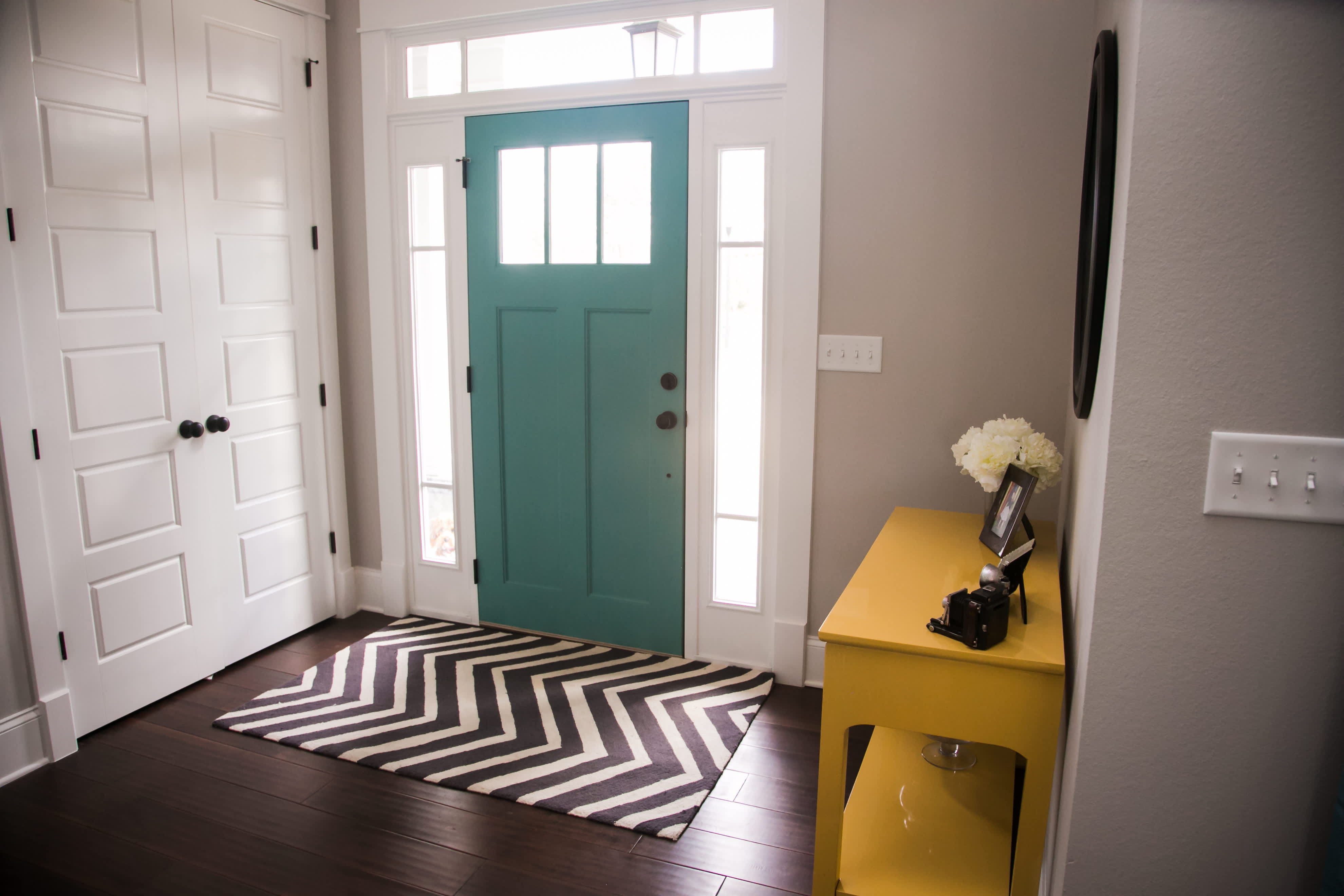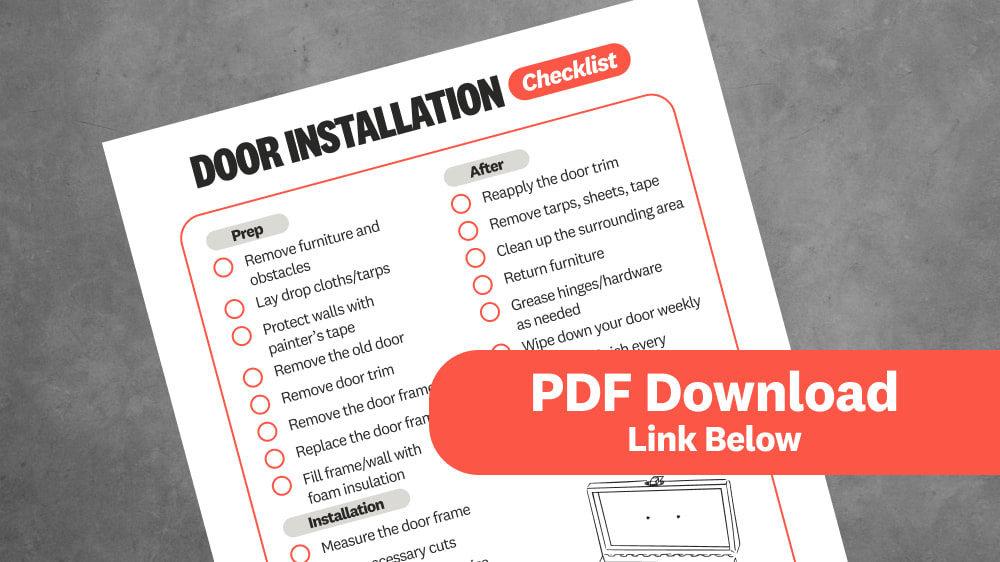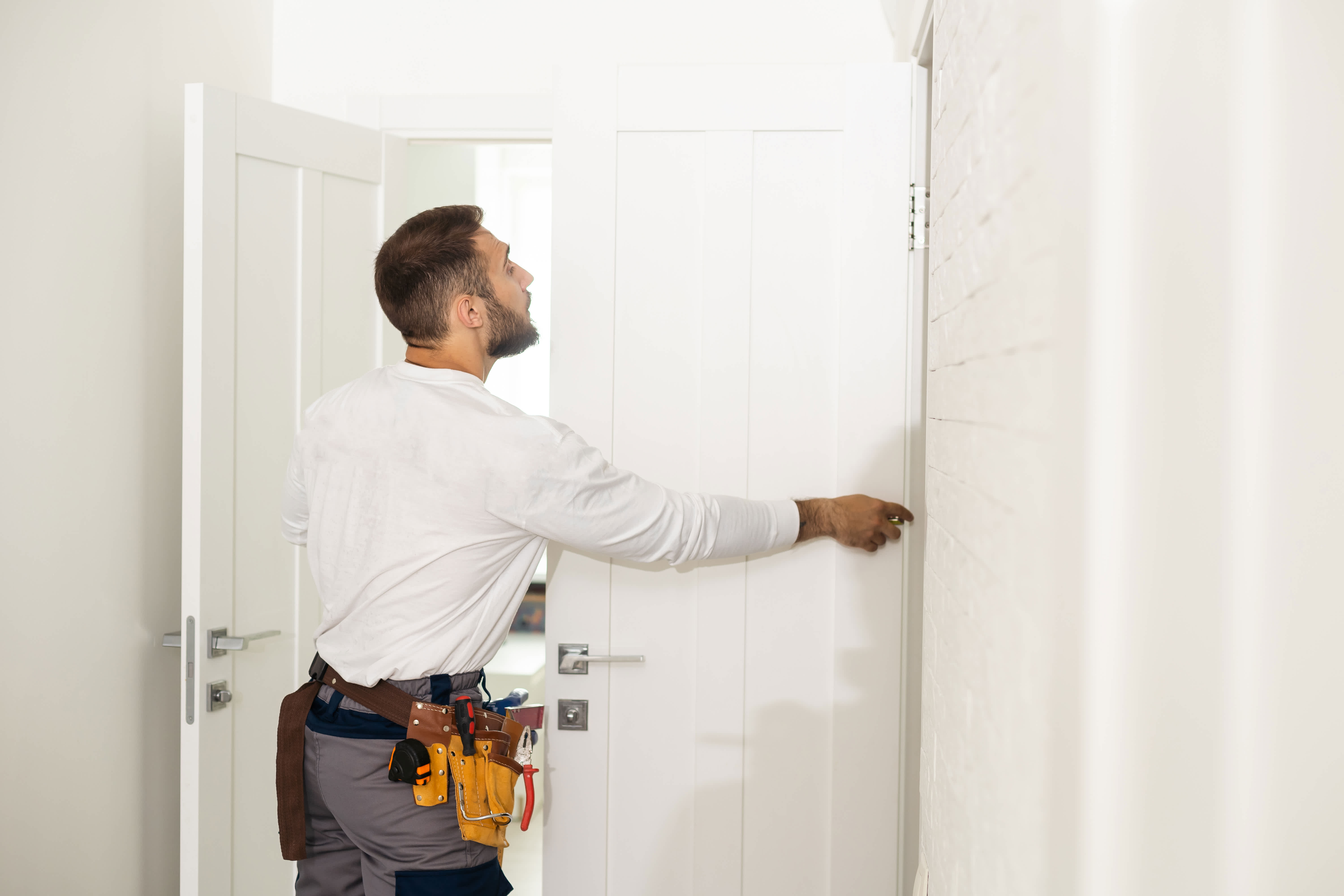
Weather stripping can boost your home’s energy efficiency and reduce energy bills. Use this guide on the cost of weather stripping to budget for an upgrade.
What you need to know before you can get your foot in the door


If a door in your home no longer opens and shuts as it should, it’s likely time to consider a replacement. Swapping out this home feature for another may seem easy enough, but plenty of potential door installation problems can arise. But following the correct steps will ensure your project is a success.
This door installation checklist outlines what you need to know to navigate this process smoothly, including when you’re better off letting a pro handle the job.

When it comes to how to hang a door, there are quite a few tools and supplies you’ll need to gather first. That includes the door itself and the hinges it will sit upon, as well as a new door frame and insulation. However, here's a full list of all the supplies you should gather ahead of time.
Screwdriver
Door stoppers
Pencil
Straight edge
Protective gear (safety goggles, ear protection, mask, full-length clothing)
Electric planer
Circular saw
Tape measure
Flat-edge chisel
Wooden mallet
Drill and drill bits
Hole saw
Level
Fine-grit sandpaper
Hinges
Screws
Drop cloths/tarps
Painter’s tape
Foam insulation
Doorknob set
Door frame
Door trim
Door
Paint
Paintbrush
Stain
Correctly prepping to install a door is just as if not more important than the door installation process itself. That will include everything from clearing and protecting your space and yourself, to additional construction—like removing the existing trim and doorframe and building new ones from scratch if the originals are no longer in a good state.
Remove furniture and obstacles from the surrounding area
If installing an exterior-facing door, aim to work in clear and relatively cool conditions.
Protect your floor with drop cloths and/or tarps; protect the surrounding walls with painter’s tape.
Remove the old door.
Gently remove door trim and set aside to reuse later if it’s in good condition.
Remove the door frame if necessary—for instance, if it’s warped, cracked, dented, or there are signs of mold in the wood.
Fill space between frame and wall with foam insulation and allow time for it to cure (between eight and 24 hours).
You should budget about two days for a project like this. On the first day, plan to make sure your new door fits into its frame and make any adjustments if necessary. Now is also the ideal moment to paint or finish your door so it will have plenty of time to dry thoroughly and be ready to hang on day two.
Measure the door frame and mark where cuts will be necessary on your new door.
Use tools like a circular saw and electric planer to cut your door down to the right size.
Verify that the door fits the frame and continue cutting until it does.
Cut a doorknob hole if one isn’t already present.
Use fine-grit sandpaper to smooth cut edges.
Paint or stain the door and let it dry (wait a full day for best results).
Use a pencil to mark where hinges will go and a chisel to clear out space for them.
Use a drill and wood screws to apply hinges to the frame. Keep a level handy to ensure they are installed evenly.
Install hardware.
Attach the door to the hinges and use a door stopper to keep it steady while you work.
Alternatively, skip this DIY work and find out who installs doors instead.
Once you’re done installing, it’s time to start cleaning—but not before giving your new door a test run to ensure it functions properly.
Double-check that the door works as it should and make any fixes if necessary.
Reapply the door trim.
Remove protective tarps, sheets, and tape.
Clean up the surrounding area and anywhere affected by construction.
Return furniture and belongings to their rightful place.
Periodically grease hinges and hardware to limit damage down the line.
Wipe down your door on a weekly or biweekly basis.
Repaint or refinish when the current coat fades or shows signs of decay (approximately every two to three years).

The cost to install a new interior door ranges from $360 to $1,200. If you choose to hire a trained hand, expect 50% of the total expenses to cover the labor fees of a professional door installer. They typically charge a minimum of $350 for the most basic installation, and you can expect to pay even more—up to $1,500 or more for labor alone—if additional construction is required, like installing a new door frame or adjusting a wall opening.
Choosing to DIY a project like this is the more cost-effective option, as you can save as much as half on overall expenses by going it solo. The downside of DIY is that you’re responsible for all the work and anything that goes wrong in the process. Most times, it's worth spending more on hiring a professional door installer near you to avoid potential headaches.
From average costs to expert advice, get all the answers you need to get your job done.

Weather stripping can boost your home’s energy efficiency and reduce energy bills. Use this guide on the cost of weather stripping to budget for an upgrade.

Screen door installation costs depend on size, type of frame material, and the number of doors. Here’s everything you need to know.

When adding a fresh new entryway to your home, you may be curious about the cost of sliding glass doors. Let's break it down by size, style, and design.

The life expectancy of your front door will depend on a variety of factors, including routine maintenance, regular replacement of gaskets and weather sealing, and whether your door is protected from the elements. Learn how long your front door will last.

Wood rot in an exterior doorframe minimizes your home's energy efficiency and leads to costly repairs. Here are some simple DIY fixes to reduce the rot.

Slab and pre-hung doors are both excellent interior door choices. This guide compares the two based on essential factors in the decision-making process.